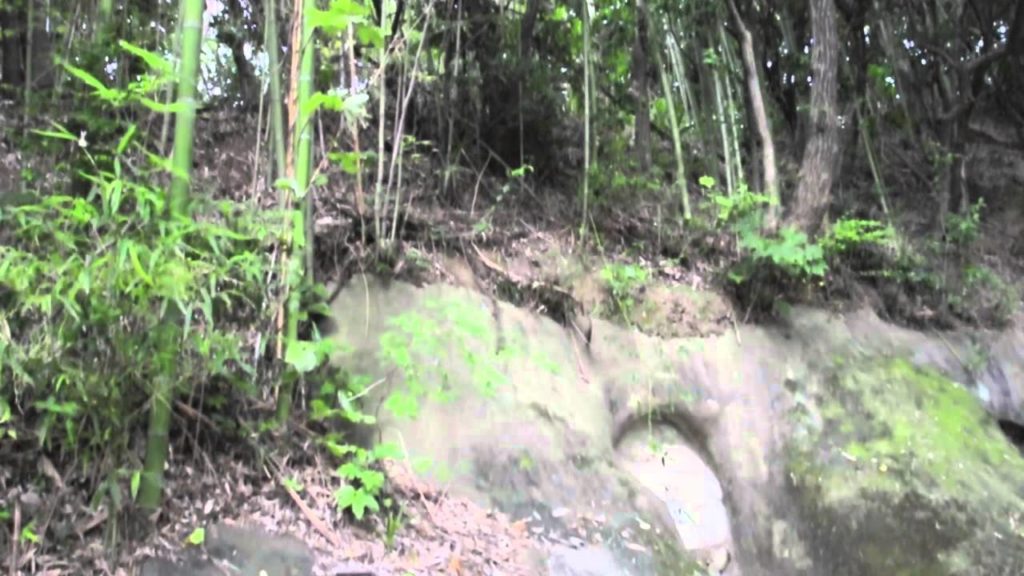Ichigao yokoana (burial catacombs)
The Ichigao burial tumuli in Aoba, Yokohama, Kanagawa prefecture were discovered in 1933. Consisting of 19 burial holes carved into the rock face, they once served as the burial chambers of wealthy and important village chieftains and clan leaders. All throughout Japan’s feudal past the tumuli had remained hidden on the side of the mountain in thick forest.
Very little is actually known about them other than that they were carved between the late Kofun period (250 – 538) and late 8th century. Most are around 2 metres in height which allowed families to enter to pay their respects. They have anterior chambers which were used for religious observances, probably to pay respects to the dead and these are separated from the burial area by a step.
Facing west, the tumuli once had an unobstructed view of the sacred Mount Õyama and the Tanzawa mountains, as well as the sacred Mount Fuji. Much of the view is now obstructed by trees and buildings, but it would have been a grand view from this position in those ancient times.
Artefacts have been excavated from the tumuli consisting of an early straight single edged iron sword, human remains, jade magatama beads, copper rings from horse harnesses, and lots of pieces of haji pottery. It is the haji pottery that forms part of the basis of dating archaeological sites all over Japan and gives us a better idea of who may be buried there.
The large number of jade magatama beads (coma shaped beads) shows that the persons buried here were chieftains. Magatama were brought to Japan by Korean immigrants who saw these as magical items. They were worn predominantly by shamans who were believed to have sacred or magical powers and also on the crowns and necklaces of Korean kings. They were also given to chieftains by shamans to ward of evil and for protection. In the shape of a bear’s claw, magatama are representative of the Celestial Bear or the seven stars of the north.
All of the artefacts that were uncovered from the tumuli have been removed and are at various museums. In the tomb numbered A-12 there are some artefacts that can be seen looking in from a heavy glass window, but the lack of an interior light and the dirty glass makes it very hard to see much.
In 1957 the area was designated an historic site in Kanagawa Prefecture and after extensive excavations were carried out in the 1960’s the area was concreted to protect it from erosion. In 1983 it was further developed as an archaeological park and signs were put in place.


AloJapan.com